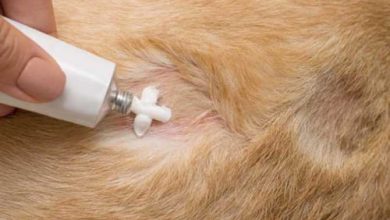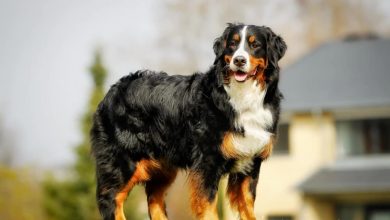How To Get Dog Drool Off Leather Car Seats

Introduction:
This article will provide a comprehensive guide on how to get dog drool off leather car seats, including what you need, how to remove fresh and old drool, tips for preventing future drooling, common mistakes to avoid when cleaning, professional cleaning services, additional tips and considerations for cleaning and protecting your leather car seats, a conclusion and frequently asked questions about removing dog drool from leather car seats.
Why Clean Dog Drool Off Leather Car Seats?:
Cleaning dog drool off of leather car seats is an important task that should not be overlooked or neglected. Not only does it help keep your vehicle looking clean and presentable, but it also prevents the drool from causing permanent damage or staining the leather surface of your car seat. Additionally, leaving dog drool on a leather seat can attract dirt and dust particles which can further damage the material over time if not properly cleaned up right away.
What You Need To Clean Dog Drool Off Leather Car Seats:
In order to effectively clean dog drools off of leather car seats you will need a few basic supplies such as; mild soap solution (dish soap or similar), a soft cloth (microfiber works best), distilled water, white vinegar, and a vacuum cleaner. It is also important to have some non-abrasive cleaning products such as saddle soap or leather cleaner/conditioner on hand in case the drool has caused any staining or discoloration to the leather surface.
How To Remove Fresh Dog Drool From Leather Car Seats:
The best way to remove fresh dog drool from leather car seats is to use a damp cloth with some mild soap solution. Gently wipe away the drool using circular motions until it is completely gone. Be sure to rinse off any remaining soap residue with distilled water afterwards.
How To Remove Old Or Stained Dog Drool From Leather Car Seats:
If the drool has been left on the seat for an extended period of time or has caused staining or discoloration then it may require more intensive cleaning methods. One option is to use white vinegar mixed with distilled water in equal parts and apply it directly to the affected area using a soft cloth. Gently rub the mixture into the stain in circular motions until it is gone. Then use a vacuum cleaner to remove any excess liquid or residue that may be left behind.
Tips For Preventing Future Dog Drool On Your Leather Car Seats:
To prevent future dog drooling on your leather car seats there are several steps you can take such as; keeping your pet’s water bowl full at all times so they don’t become dehydrated, wiping down their mouth after meals/snacks to reduce saliva buildup, and providing them with chew toys/treats instead of letting them chew on furniture/car seats which can lead to excessive salivating. Additionally, you should make sure that your pet’s nails are trimmed regularly as long nails can cause tears in the fabric of the seat which can lead to further damage over time if not taken care of properly.
Common Mistakes To Avoid When Cleaning Dog Drool Off Leather Car Seats:
When cleaning dog drools off of leather car seats there are several common mistakes that should be avoided such as; using harsh chemicals or abrasive cleaners which can cause discolorations or damage the material over time, scrubbing too hard which can cause scratches or tears in the fabric, and not rinsing off any remaining soap residue which can leave behind a sticky film that attracts dirt and dust particles. Additionally, it is important not to let any liquid sit on the seat for too long as this can cause staining or discolorations which are difficult to remove once they have set in.
Professional Cleaning Services For Leather Car Seats With Heavy Dog Drool Damage:
If your leather car seat has suffered heavy damage due to dog drooling then it may be necessary to hire a professional cleaning service in order to restore it back to its original condition. Professional cleaners have access to special products and techniques that can help remove even the toughest stains without causing further damage or discolorations. Additionally, they can also provide advice on how best to protect your car seat from future damages caused by pet drooling.
Additional Tips And Considerations For Cleaning And Protecting Your Leather Car Seats:
In addition to regularly cleaning up any pet drools on your leather car seat there are several other tips you should consider in order to protect it from further damages such as; using protective covers when transporting pets in your vehicle, investing in quality leather conditioners that will help maintain its luster and prevent cracking/peeling over time, avoiding direct sunlight exposure which can cause fading/discolorations, and regularly vacuuming/wiping down the surface of your seat in order keep dirt/dust particles from settling into its pores. Additionally, always make sure that all liquids are wiped up immediately as this will prevent them from seeping into cracks/crevices where they could cause further damages if left unattended for too long.
Conclusion:
Removing dog drools off of leather car seats is an important task that should not be overlooked or neglected as it helps keep your vehicle looking presentable while preventing further damages caused by pet saliva build-up over time. By following this comprehensive guide you will be able to effectively clean up any messes made by your furry friend while protecting your investment at the same time!
FAQs:
Q: How do I get rid of old stains caused by pet drooling?
A: The best way to remove old stains caused by pet drooling is by using white vinegar mixed with distilled water in equal parts applied directly onto the affected area with a soft cloth using circular motions until it is gone followed by vacuuming up any residual liquid or residue left behind afterwards.
Q: Are there any special products I should use for cleaning my leather car seat?
A: Yes! It is important that you use non-abrasive cleaners such as saddle soap or quality leather conditioners when cleaning your leather car seat in order prevent any further damages from occurring due to harsh chemicals or abrasive materials being used during the process.




